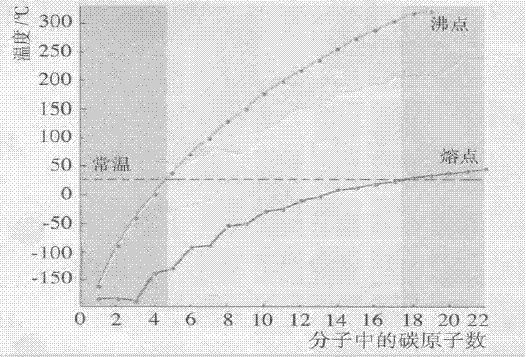Method for producing polyester polyol
A polyester polyol and product technology, applied in the field of chemical production, can solve the problems of heavy odor and dark color of finished products, and achieve the effect of low odor, light color and wide application fields
- Summary
- Abstract
- Description
- Claims
- Application Information
AI Technical Summary
Problems solved by technology
Method used
Image
Examples
Embodiment 1
[0017] A polyester polyol of ethylene adipate having a hydroxyl value of about 226 mgKOH / g was prepared. Put 100kg of adipic acid and 61kg of ethylene glycol into the polyester reactor, heat up to 100 degrees, add 0.08kg of catalyst butyltin, continue to heat up, control the temperature of the distillate to be less than 94 degrees, and keep the temperature at 220 degrees. After the temperature of the distillate drops to 85 degrees, take a sample and observe it. If the material is uniform, add 6kg of aliphatic hydrocarbon with a boiling point of 110-130 degrees to reflux and test the acid value every two hours. When the acid value reaches the set value and is less than 2mgKOH / g , turn on the vacuum, increase the temperature to 230 degrees to extract the reflux solvent, and discharge the material when the temperature is lowered to 120 degrees. The Gardner color number of the product obtained is about 1#, and as adopting traditional methods such as xylene, the Gardner color numb...
Embodiment 2
[0019] A polyester polyol of 1,6-hexanediol adipate having a hydroxyl value of about 97 mgKOH / g was prepared. Put 100kg of adipic acid and 100kg of 1,6-hexanediol into the polyester reactor, raise the temperature to 100 degrees, add 0.08kg of catalyst butyltin, continue to raise the temperature, control the temperature of the distillate to be less than 94 degrees, and the material temperature is 220 degrees, Keep warm, wait until the temperature of the distillate drops to 85 degrees, take a sample and observe, if the material is uniform, add 6kg of 110-130 degrees boiling point aliphatic hydrocarbon reflux solvent to reflux, test the acid value every two hours, when the acid value reaches the set value less than 2mgKOH / g, turn on the vacuum, raise the temperature to 230 degrees to extract the reflux solvent, and discharge the material when the temperature is lowered to 120 degrees. The Gardner color number of the product obtained is about 0#, and as adopting traditional meth...
Embodiment 3
[0021] A polyester polyol of 1,6-hexanediol phthalate having a hydroxyl value of about 103 mgKOH / g was prepared. Put 100kg of phthalic anhydride and 100kg of 1,6-hexanediol into the polyester reactor, heat up to 100 degrees, add 0.08kg of catalyst butyltin, continue to heat up, control the temperature of the distillate to be less than 94 degrees, and keep the material temperature at 220 degrees. After the temperature of the distillate drops to 85 degrees, take a sample and observe it. If the material is uniform, add 6kg of aliphatic hydrocarbon with a boiling point of 130-150 degrees to reflux and test the acid value every two hours. When the acid value reaches the set value less than 2mgKOH / g , turn on the vacuum, increase the temperature to 230 degrees to extract the reflux solvent, and discharge the material when the temperature is lowered to 120 degrees. The Gardner color number of the product obtained is about 1#, and as adopting traditional methods such as xylene, the G...
PUM
| Property | Measurement | Unit |
|---|---|---|
| Hydroxyl value | aaaaa | aaaaa |
| Hydroxyl value | aaaaa | aaaaa |
| Hydroxyl value | aaaaa | aaaaa |
Abstract
Description
Claims
Application Information
 Login to View More
Login to View More - R&D
- Intellectual Property
- Life Sciences
- Materials
- Tech Scout
- Unparalleled Data Quality
- Higher Quality Content
- 60% Fewer Hallucinations
Browse by: Latest US Patents, China's latest patents, Technical Efficacy Thesaurus, Application Domain, Technology Topic, Popular Technical Reports.
© 2025 PatSnap. All rights reserved.Legal|Privacy policy|Modern Slavery Act Transparency Statement|Sitemap|About US| Contact US: help@patsnap.com

